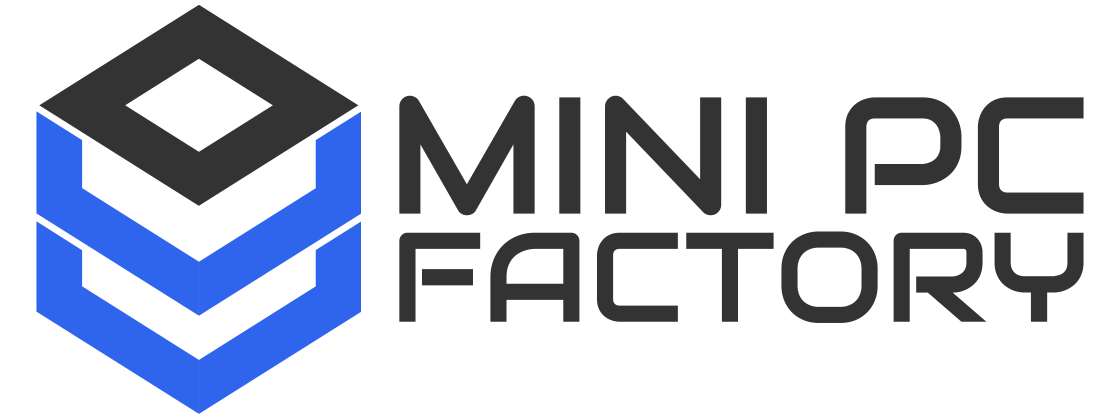Posted At: أبريل 29, 2025 - 307 Views

The rapid evolution of business computing needs has prompted organizations to reconsider the type of hardware used across their operations. The emergence of Mini PCs has challenged the dominance of traditional desktop PCs in commercial deployments. Businesses are now weighing the advantages of compact, energy-efficient systems against the tried-and-true performance of traditional tower setups. This article explores which is better suited for commercial use — Mini PCs or Traditional PCs — by breaking down key factors like performance, scalability, cost, and long-term benefits.
What Are Mini PCs?
Compact Yet Powerful
Mini PCs, or mini personal computers, are small-form-factor computing devices designed to deliver essential computing capabilities without the bulk of traditional desktops. These devices can be as small as a book and are often mounted behind monitors or under desks.
Key Features of Mini PCs
Space-saving design
Low power consumption
Solid-state drives (SSDs)
Quiet operation
Often fanless or equipped with small fans
| Feature | Mini PCs |
|---|---|
| Size | Small (0.6 to 2 liters volume) |
| Energy Usage | Low (typically 10W–65W) |
| Noise Level | Very low or silent |
| Typical Use Cases | Digital signage, kiosks, POS |
What Are Traditional PCs?
Full-Size Functionality
Traditional PCs refer to desktop towers or mid-tower systems that provide more room for components like full-sized GPUs, multiple hard drives, and larger motherboards. These machines have dominated enterprise deployments for decades due to their versatility and upgradeability.
Key Features of Traditional PCs
High performance for intensive tasks
Easy to upgrade and repair
More ports and expandability
Typically include dedicated graphics cards
| Feature | Traditional PCs |
|---|---|
| Size | Large (10+ liters volume) |
| Energy Usage | High (65W–500W+) |
| Noise Level | Moderate to loud |
| Typical Use Cases | Video editing, engineering CAD |
Performance Comparison
CPU and GPU Capabilities
Traditional PCs often feature high-performance CPUs and GPUs that are ideal for resource-heavy tasks. However, modern Mini PCs are closing the gap with efficient processors like Intel Core i7 and AMD Ryzen series, offering adequate performance for everyday commercial use.
Chart: CPU Benchmark Scores (Sample Averages)
| Device Type | Intel i5 (Mini PC) | Intel i7 (Trad. PC) |
|---|---|---|
| Geekbench Score | 8600 | 12400 |
A Mini PC might not rival a workstation in raw power, but it’s more than sufficient for applications like office productivity, digital signage, and customer service kiosks.
Storage and Memory
Mini PCs typically come with SSDs and support up to 32GB of RAM, while traditional PCs can support more extensive configurations including RAID storage arrays and 128GB+ RAM, essential for data-heavy tasks.
Deployment Flexibility
Space Efficiency
Mini PCs shine in scenarios where space is at a premium. They can be mounted on walls, behind monitors, or inside display cabinets. This makes them ideal for:
Retail environments
Conference rooms
Hospital carts
Smart classrooms
Portability and Setup Time
Because of their compact form and lighter weight, Mini PCs are faster to deploy and easier to ship. IT teams appreciate the ease of installing multiple units across various locations in minimal time.
Cost Analysis
Initial Investment
| Device Type | Average Cost per Unit |
|---|---|
| Mini PC | $250–$600 |
| Traditional PC | $500–$1,200 |
Long-Term Operational Costs
Mini PCs consume far less power and often last longer without the need for upgrades. Traditional PCs might incur more operational expenses due to higher electricity consumption and cooling needs.
Pie Chart: Total 3-Year Ownership Cost (%)
(Based on a 100-unit deployment)
Hardware Cost: 40%
Energy Consumption: 20%
Maintenance: 30%
Downtime Costs: 10%
Mini PCs tend to have a lower total cost of ownership (TCO), especially in energy-sensitive or remote deployments.
Use Case Scenarios
Best Environments for Mini PCs
Digital Signage Networks
Call Centers
Hotel Front Desks
Banking Terminals
School Computer Labs
Best Environments for Traditional PCs
3D Rendering Studios
Video Editing Suites
Engineering Offices
Game Development Studios
Scientific Research Facilities
Security and Manageability
Both Mini PCs and Traditional PCs support enterprise-grade security features like TPM 2.0, BIOS locks, and remote management (e.g., Intel vPro). However, Mini PCs often come with fewer external ports, reducing the attack surface in public or semi-public settings.
Environmental Impact
Mini PCs generally produce less heat and consume less power, making them a more eco-friendly option. Businesses aiming to reduce their carbon footprint benefit from deploying Mini PCs.
Energy Efficiency Comparison
| Parameter | Mini PC | Traditional PC |
|---|---|---|
| Avg. Power Draw | 15–65W | 120–500W |
| Heat Emission | Low | High |
| Cooling Needs | Minimal | Moderate/High |
Lifespan and Reliability
While traditional PCs can be upgraded more easily to extend lifespan, Mini PCs are surprisingly robust. Many models are fanless, reducing mechanical failure. SSDs further increase reliability.
Which Should You Choose?
The right choice depends on your specific commercial requirements:
Choose Mini PCs if your priority is space-saving, low power consumption, and cost-effective scalability.
Choose Traditional PCs if your workflows demand high computing power, GPU acceleration, and regular hardware customization.

